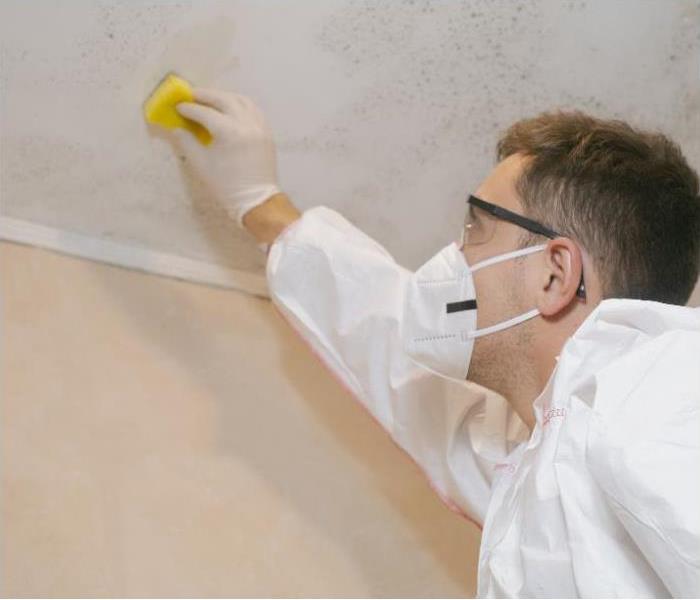Mold Damage Restoration After Water Damage in Layton, UT: Acting Quickly to Avoid Further Issues
9/24/2024 (Permalink)
When water damage occurs in your home in Layton, UT, the urgency of addressing the problem cannot be overstated. Beyond the immediate concerns of drying out and repairing the damage, there's an additional threat that lurks in the shadows—mold. Mold growth is a common consequence of water damage, and it can have serious implications for both your home and health. Understanding how to act swiftly and effectively can make a significant difference in preventing and managing mold damage. Here's a comprehensive guide to mold damage restoration and how to minimize further damage.
Understanding the Risks of Mold
Mold thrives in moist, warm environments, and water damage creates the perfect conditions for its growth. In Layton, UT, where humidity levels can vary and heavy rains are not uncommon, homes are particularly susceptible to mold issues. Mold can begin growing within 24-48 hours of water damage, making quick action essential to prevent it from spreading.
Mold can affect various surfaces and materials, including wood, drywall, carpet, and insulation.
8 steps for Effective Mold Damage Restoration
Immediate Action: Addressing Water Damage
The first step in mold damage restoration is to address the source of the water damage. Whether it's a burst pipe, a leaky roof, or flooding from heavy rains, identifying and repairing the source of water intrusion is critical. Without resolving the root cause, any restoration efforts will be futile.
1. Ensure Safety and Contain the Area
Before starting any cleanup, ensure the area is safe. If the water damage is extensive, there may be electrical hazards or structural issues. Turn off the electricity to the affected areas if it's safe to do so. Use protective gear such as gloves, masks, and goggles to avoid direct contact with contaminated materials.
Contain the affected area to prevent mold spores from spreading to other parts of your home. Use plastic sheeting or other barriers to isolate the contaminated zone.
2. Remove and Dispose of Damaged Materials
Materials that have been severely damaged by water and cannot be thoroughly cleaned should be removed and disposed of. This includes items like soaked carpets, drywall, and insulation. Mold can quickly grow on these materials, so removing them reduces the risk of further contamination.
3. Dry Out the Area
Drying out the affected area is a crucial step in preventing mold growth. Use dehumidifiers, fans, and ventilation to reduce moisture levels. Ensure that all surfaces, including walls, floors, and furniture, are completely dry. In some cases, professional drying equipment may be necessary to achieve optimal results.
4. Clean and Disinfect
Once the area is dry, clean and disinfect all surfaces that were affected by water. Use a mixture of water and detergent to scrub surfaces, and follow up with a disinfectant to kill any remaining mold spores. For non-porous surfaces, this process is usually sufficient. However, porous materials that have absorbed water, such as wood or drywall, may require more extensive treatment or replacement.
5. Inspect for Mold Growth
After cleaning, inspect the area for any signs of mold growth. Look for discoloration, musty odors, or visible mold colonies. If you notice any mold, it's important to address it promptly. Small mold patches can often be cleaned with a mixture of water and bleach, but larger infestations may require professional remediation.
6. Professional Mold Remediation
For extensive mold issues, it's best to consult with a professional mold remediation specialist. These experts have the tools and expertise to handle significant mold infestations and ensure that the problem is thoroughly resolved. They can also perform air quality testing to ensure that mold spores have been fully removed from your home.
7. Prevent Future Mold Growth
Once the mold has been addressed, focus on preventing future issues. This involves addressing any ongoing moisture problems, improving ventilation, and regularly inspecting areas prone to water damage. Consider installing a dehumidifier or improving your home's drainage system to minimize the risk of mold growth.
8. Monitor and Maintain
Even after the initial mold restoration process is complete, continue to monitor your home for any signs of recurring moisture or mold. Regular maintenance and inspections can help catch potential issues before they become major problems.
Tips for Acting Quickly to Avoid Further Damage
Act Fast: Mold can start growing within 24-48 hours of water damage, so swift action is crucial. Address water damage immediately and begin the drying process as soon as possible.
Document the Damage: Take photos and videos of the damage for insurance purposes. This documentation can be helpful when filing a claim or seeking professional assistance.
Avoid DIY for Extensive Mold Issues: While minor mold problems can be tackled with DIY methods, extensive mold infestations are best handled by professionals. They have specialized equipment and knowledge to effectively remove mold and prevent it from returning.
Ensure Proper Ventilation: Good ventilation helps reduce moisture levels and prevent mold growth. Use fans, open windows, and ensure proper airflow in areas prone to humidity.
Regular Maintenance: Keep up with regular home maintenance to prevent issues that can lead to mold growth. This includes checking for leaks, maintaining gutters, and ensuring proper ventilation.
Mold damage restoration after water damage requires prompt and effective action to prevent further issues. By addressing the source of water damage, thoroughly drying out the affected area, and taking steps to clean and disinfect, you can minimize the risk of mold growth. For extensive mold problems, professional assistance is often necessary. In Layton, UT, where water damage can be a concern, staying vigilant and proactive will help ensure that your home remains safe and healthy.






 24/7 Emergency Service
24/7 Emergency Service
